The cute and colourful animals that are threatened around Brisbane are often widely publicised, but the lesser known plants don’t receive much fanfare, and they are just as important. This article focusses on three threatened plants found on Land for Wildlife properties in Brisbane. Although they grow in other areas in south-east Queensland (SEQ), they have small and fragmented populations. With climate change and potential mismanagement, they could disappear off our radar without us even knowing.
In addition to these three species, there are many more listed plants and animals that occur on Land for Wildlife properties in Brisbane and across SEQ. I feel blessed to have uncovered these species and it gives me encouragement to see that they are being protected and embraced by property owners.
Brush Sophora (Sophora fraseri)
Listed as Vulnerable – federal Environment Protection and Biodiversity Conservation Act 1999 (EPBC) and Queensland’s Nature Conservation Act 1992 (NCA)
This is a sparsely branched shrub to two metres with bright pea-like yellow flowers which form on racemes (or long clusters/spikes). The leaves are alternate and pinnate with 21-35 ovate (rounded) leaflets. Like all plants in the Fabaceae family, Sophora fraseri has pods that are cylindrical to 10cm in length. Found on slopes in wet sclerophyll and rainforest margins from SEQ to northern NSW. In Brisbane it seems to be found in Regional Ecosystem (RE) 12.11.3/a and 12.11.5 under the canopy of eucalypts that are within the vicinity of dry rainforests.
Even though I have known about this plant for a while, I only stumbled across it about 18 months ago. My first discovery was the faint glimpse of bright yellow flowers beyond a patch of Lantana in an ephemeral gully at the back of Grandview Road, Upper Brookfield. To an untrained eye, the flowers and leaves look very similar to the exotic Easter Cassia (Senna pendula var. glabrata), but it was the wrong time of the year and I could see they were slightly brighter yellow and were in a different flower formation than the look-a-like exotic version. Crashing through the Lantana I knew exactly what it was and quickly explained its importance and rarity to the property owner. We found another ten plants downstream, all flowering despite the drought-like conditions.
A few weeks later I came across another flowering Sophora fraseri on the top of a southerly facing slope in Spotted Gum forest (RE 12.11.5) up the back of Upper Brookfield Road. Again, I explained the importance of the plant to the excited property owner. About a month later, I received a phone call from the property owner, asking that I must visit as soon as possible. About a week later we visited the same spot and, low and behold, I saw a sea of yellow beyond the one Sophora fraseri we found a month ago. The property owner had cleared Lantana, Climbing Asparagus and Ochna along a fence line further down the slope and uncovered dozens of Sophora fraseri up to 1.5m in height. Further clearing has uncovered dozens more plants on the slope. This plant has also been identified on a property in Pacey Road, Upper Brookfield and Savages Road, Brookfield.
If it wasn’t for the flowers, I would have struggled to see both plants, so look out for its flowers from late winter through to late spring. A big threat to this plant is the misidentification of it with the exotic weed, Easter Cassia, and its subsequent removal. The flower spikes, smaller seed pods, pea-shaped flower, white/light green trunk, branches and leaflets are all different from that of Easter Cassia. It also usually flowers later than Easter Cassia, which flowers in autumn. If you are unsure or a plant’s identification, please get a positive identification from your Land for Wildlife officer before you remove it.
Other threats to Sophora fraseri is competition from woody weeds, particularly Lantana which can dominate, smother and reduce light to native shrubs as well as increase fire fuel loads. The common practice of clearing or ‘cleaning up’ the shrub layer or grazing by livestock/horses also threaten this species.
References & Further Reading
Leiper G, Glazebrook J, Cox D & Rathie K (2017) Mangroves to Mountains: A field guide to the native plants of south-east Queensland. Logan River Branch SGAP.
https://apps.des.qld.gov.au/species-search
www.environment.gov.au/biodiversity/threatened
www.environment.nsw.gov.au/threatenedspeciesapp
www.flora.sa.gov.au
Lloyd’s Native Olive (Notalaea lloydii)
Listed as Vulnerable under NCA
Within Brisbane, Notalaea lloydii grows in dry open eucalypt forests and ephemeral gullies to the west of the city. Like Sophora fraseri, Lloyd’s Native Olive has a small range of ~120km, extending from Beaudesert to Somerset Dam and from Laidley to Upper Brookfield. Although scattered through these other areas, outer western Brisbane seems to be a stronghold for this species, on both private and public land. This shrub was named after my favourite botanist, Lloyd Bird, and my first experience with it was about 15 years ago while I was working for Ipswich City Council. We located a large shrub about 1.5m high on the edge of a fire trail in Flinders/Goolman Reserve.
Lloyd’s Native Olive is a twiggy shrub that grows to 4m, although I haven’t seen one taller than 2m. It has stiff, opposite, thin leaves up to 15cm in length and 7-10mm in width. It has small creamish flowers from autumn to winter with a round black fruit from 6-10mm that ripens in summer.
When I started working for Brisbane City Council, I soon realised that there was a stronghold of ‘Lloydii’s’ in the outer western suburbs. Between two properties at the end of Grandview Road, Upper Brookfield there would be at least 100 plants on an easterly open eucalypt slope (RE 12.11.5 and 12.11.3a). Both properties have removed huge areas of Lantana over the past decade that were outcompeting the Lloydii. Lantana removal uncovered dozens of plants, allowing them to grow to their full potential, seed profusely, naturally regenerate and spread further. We have found another dozen or so plants on four other properties not far away from these strongholds. This plant is also found in smaller patches on the outer western suburbs of Brisbane with 17 specimens recorded from Land for Wildlife properties in Kholo (3), Mt Crosby (10) and Karana Downs (4). They are also found in a few council reserves and Moggill State Forest.
The remaining habitat of this species is highly fragmented making it extremely vulnerable to further habitat loss. Like Sophora fraseri, the biggest threats to Notalaea lloydii in Brisbane are competition from woody weeds, particularly Lantana as well as the clearing of understorey. Although more of an issue to larger conservation reserves and estates, inappropriate fire regimes are also a threat to this species as seedlings cannot withstand hot fires.
Boonah Solanum (Solanum mentiens)
Listed as Endangered under NCA
Local botanist, Andrew Wilson, stumbled across this prickly creeper whilst doing a flora survey on a Land for Wildlife property at Brookfield, which contains one of the last remaining remnant patches of notophyll vine forest in Brisbane.
In my opinion, Andrew’s discovery is one of the more significant flora finds for our region. It is the first ever record of Solanum mentiens in Brisbane and the furthest northern record by a considerable margin. It is 1 of 5 natural populations ever recorded on Atlas of Living Australia, all within SEQ. Other locations include in scrub near Canungra, at the base of Mt French near Boonah, Bahr’s Scrub near Beenleigh, and a small population near Wyaralong Dam and now Brookfield.
This endangered prostrate shrub lives in rocky dry vine forests. It has sparse prickles along the stems and the upper leaf veins. Leaves are alternate to 8cm and its lower leaf surface is white to grey. It has a white to mauve coloured flower to 25mm in spring/summer. Fruit is to 12mm and turns red when ripe.
On the Brookfield property, there are about 20-30 individual plants spread across a 20x20m patch of rocky notophyll vine scrub (RE 12.12.13) dominated by a large White Fig (Ficus virens).
Despite the recent drought and the competitive weed, Coral Berry (Rivina humilis), this population seems to be surviving and producing fruit. The biggest threat to Solanum mentiens at this site and to notophyll vine scrubs in general is the encroachment of the invasive vine, Cat’s Claw Creeper. If left untreated, the weeds would no doubt outcompete and make Solanum mentiens extinct from this site and from Brisbane. Work is planned to carefully hand remove Coral Berry and control the encroaching Cat’s Claw Creeper from around this site. Although extensive searching on adjacent properties has found no further records, it could potentially occur in undisturbed habitat in Moggill and Enoggera Creek catchments.
Article by Cody Hochen
Land for Wildlife Officer
Brisbane City Council
View Full Newsletter

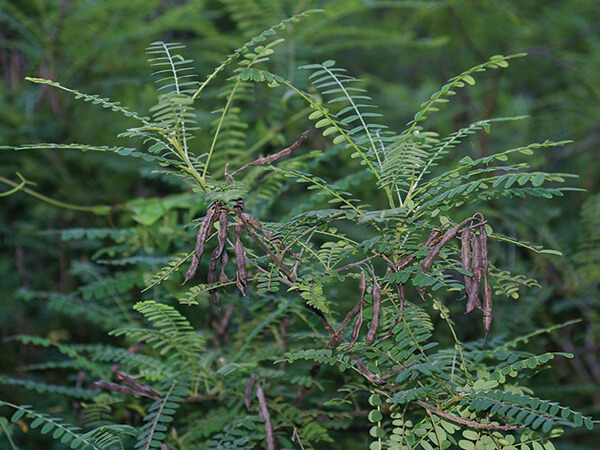
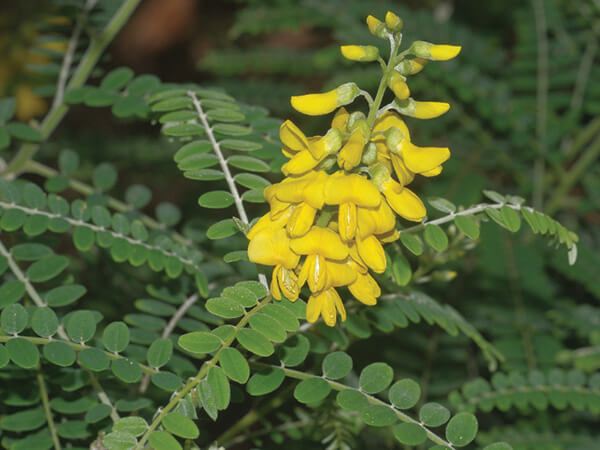
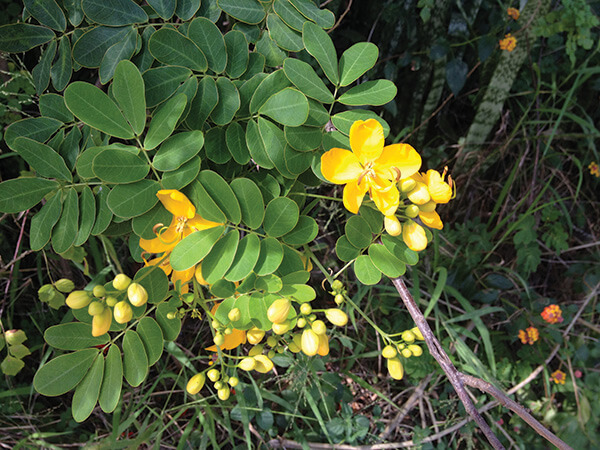

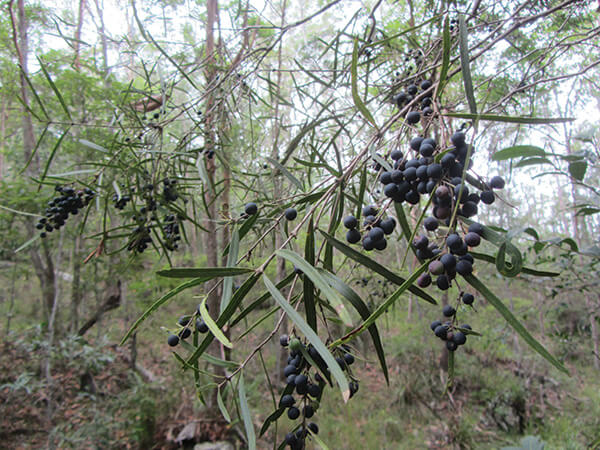
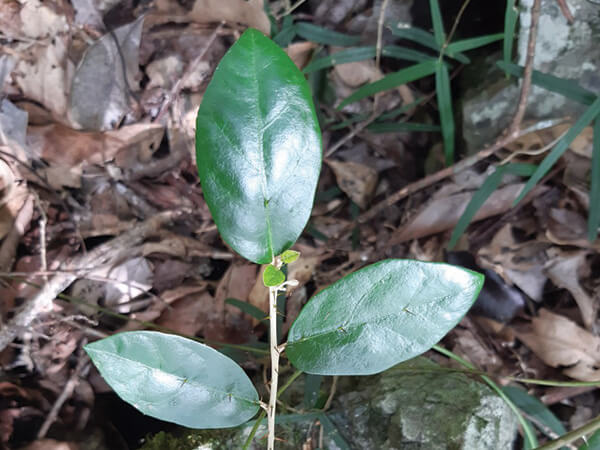
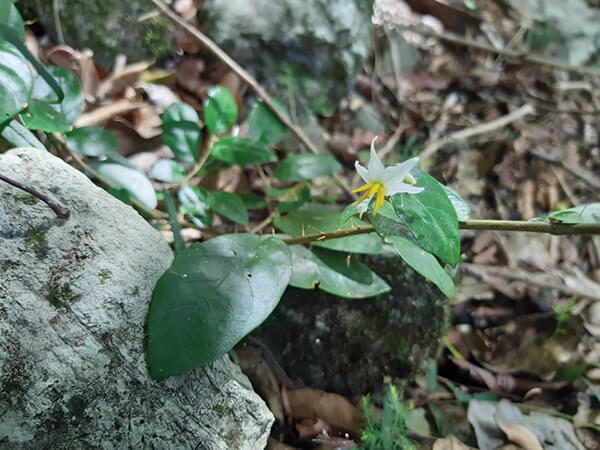
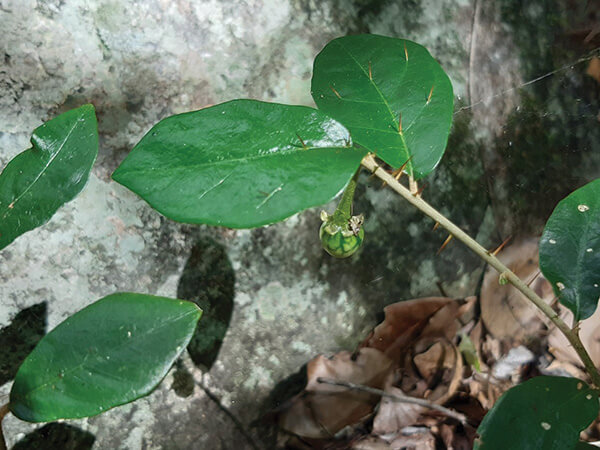
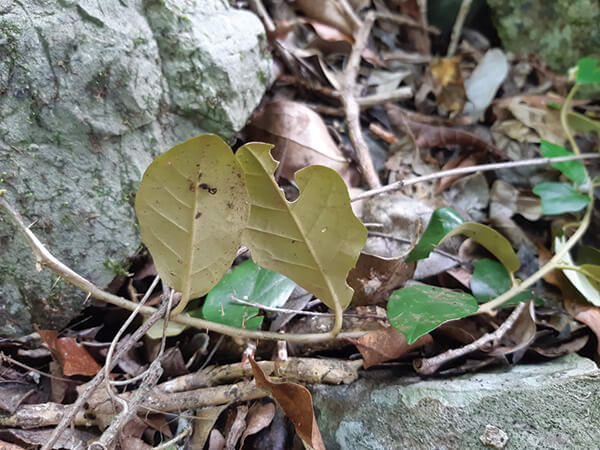
Feel lucky to have Lloyds Olive and Fraseri !
Interesting article, thanks.
I am sure i have seen this plant, while walking and hiking thu the protected gullies of the Theatened LFW “Rathburnie fauna and nature reserve” of 1700 acres; in the Somerset region, recently bequested to the WWF who don’t give a tinker’s cuss about this, jewell of a wildlife sanctuary. The authors article “Notalaea lloydii grows in dry open eucalypt forests and ephemeral gullies to the west of the city. Like Sophora fraseri, Lloyd’s Native Olive has a small range of ~120km, extending from Beaudesert to Somerset Dam and from Laidley to Upper Brookfield. Although scattered through these other areas, outer western Brisbane seems to be a stronghold for this species, on both private and public land. This shrub was named after my favourite botanist, Lloyd Bird” Unquote might validate, further investigation of this state gazetted wildlife refuge.
Sadly, local rumour has recently been vindicated, that the supposedly nature caring WWF are going to sell Graham and Valmai Burnetts gift to them; for a handsome tax-free profit?? I hope every reader at L FW contacts their local member of Parliament and petitions them to stop this sale of a 1700 acre wildlife and fauna century bequeathed in good faith by the Burnetts to the greedy WWF. I hope the author can inspect this gazetted fauna sanctuary in the near future to see what hidden botanical treasures these these remote acres hold and save them for future generations of wildlife warriors.
This article has helped me finish my assignment thanks you so much for this article.
Thanks for sharing the information; it helps a lot.